On the 15th April, Banbury Stamp Society was entertained by John Biddlecombe who spoke on the subject of New Zealand’s health stamps and the pigeon post.
The first half of John’s talk was dedicated to health stamps, a New Zealand innovation. John explained that in the early 20th century New Zealand established health camps to improve children’s health by providing them with fresh air, exercise, fun and games and good food. A formidable lady Elizabeth Gunn, persuaded the New Zealand Post Office to issue charity stamps to support the health camps and the first stamps were issued in 1929 and cost two pence. One penny paid for postage and one penny went to the fund the health camps. Stamps were issued annually after that date and John was able to show the many examples and varieties of these stamps.

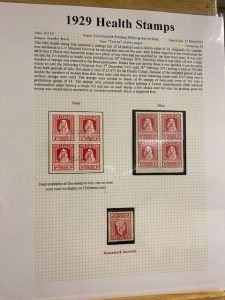
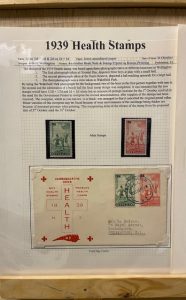
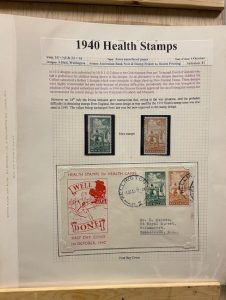
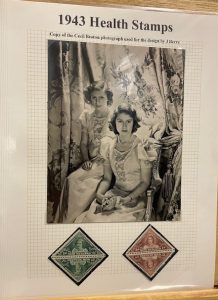
The subject matter was usually health related but took a more patriotic tone during WWII when portraits of the princesses Elizabeth and Margaret featured. In 1946 stamps featuring a returning soldier helping a child to climb over a stile celebrated victory and peace.
Health stamps were discontinued in 2016 but private charities, stamp clubs and dealers have continued to produce material benefiting the health camps which continue to operate.
The second half related to the NZ pigeon post which operated from Great Barrier Island between 1897 and 1908. The island is located about 62 miles north east of Auckland and in the 1890s communications with the mainland were slow with only one ship per week visiting. This became a serious problem when a ship wrecked on the island with great loss of life. The survivors endured days of hardship until rescue arrived. This led to demands for better communications with the mainland and the pigeon post was established with a small lightweight letter tied to the pigeon’s legs. The operators then decided to make money from collectors by issuing stamps. They became very popular and John warned against forgeries which he said were generally better looking than the originals and he showed us how to detect them. The pigeon post ceased when the islands were linked to the mainland by cable communication but the fame of the post endured with many stamp clubs, schools, dealers and charities producing material relating to the post and often flying pigeons. Finally in 1997 New Zealand Post issued stamps to celebrate the centenary of the pigeon post. John’s display contained much original material as well as later commemorative items celebrating the pigeon post and what he remarked were probably the world’s first airmail stamps.
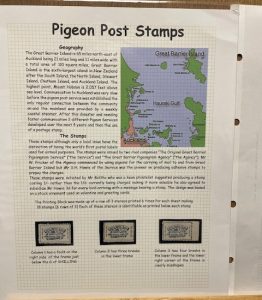
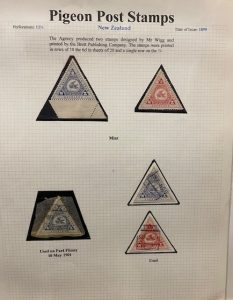
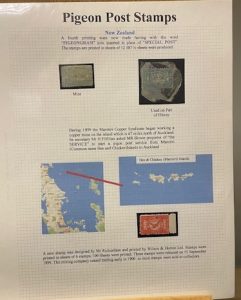
The club thanked John for a very interesting display.
Our next meeting will be on Tuesday 6th May when Carlton Jones will talk on the British stamp issues of the four kings (King Edward VII to George VI). Meet at 7:30pm at Hanwell Fields Community Centre. The Banbury Stamp Society is on-line at ‘www.banburystampsociety.co.uk’, or contact John Davies on 01295 255831. All are welcome.